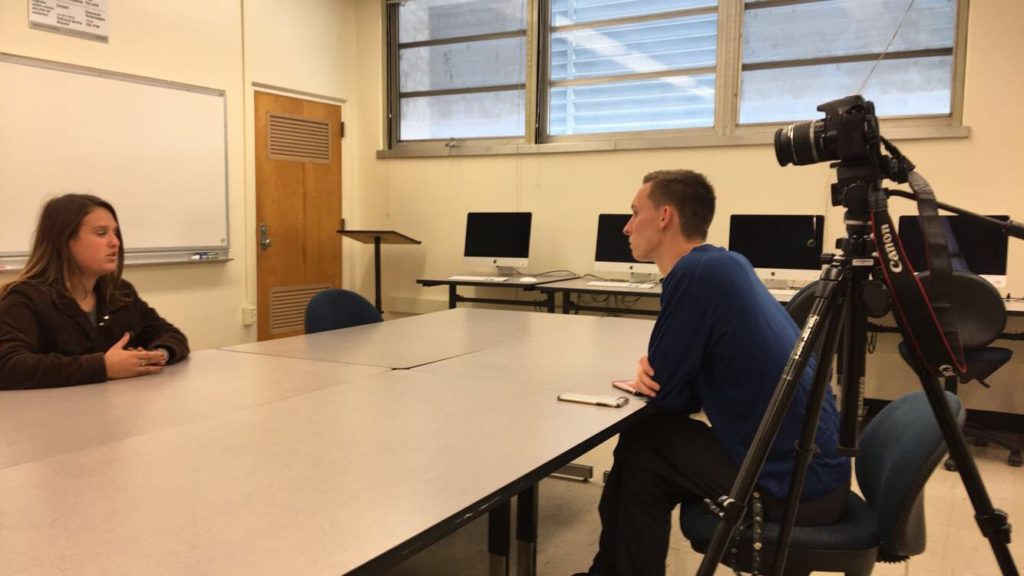Our team’s initial idea for our final story was to do a profile on the Cal Poly Men’s Head Baseball Coach, Larry Lee. We thought it would be an interesting way to help kick off the season with a profile on one of the most successful baseball coaches in the CSU system and share some insight as to what makes him such a great coach and a meaningful figure in the lives of Cal Poly’s Baseball players. This idea, however, had complications because the story was not very current and Sawyer Code (who was in charge of writing the story for this round) already does sports reporting for Mustang News.
“We had to go in a different direction because I write feature articles for athletics and it would be a conflict of interest if I did a baseball story,” Sawyer said.
The idea to cover Cal Poly Short Cuts stemmed from Kylee who suggested we cover the San Luis Obispo International Film Festival. This was a perfect topic to cover especially because the opportunities to tell the story visually were endless. As soon as we pitched the idea, it was time for us to go to work.
For my part as strategy & engagement coordinator, I had to make sure our team was in touch with any potential sources. I went on facebook to ask around on the “Cal Poly Class of 20xx” pages to see if anyone knew about Cal Poly’s involvement with the film festival. I immediately got a response from Megan Albee, an alumnus who was involved with the festival last year.

She sent me a link to this facebook page and that is how we began to narrow our focus from the San Luis International Film Festival to Cal Poly Shortcuts. This was the perfect angle for our story: an event within the film festival dedicated to showing student work. On that same facebook page I found this website that listed the different films and the students that worked on those films. I tried my best to contact as many writers and directors as I could through facebook and email. I also relayed contact information I acquired to my team so that they could coordinate with those sources.
Summer Sinnett, who was in charge of the interactive portion of our project, was the first to reach out to Wendy Eidson, the director of the festival. At first she had trouble contacting her.
“Sadly it was a voice recording but it allowed me to leave a message so I did that and I sent a message through the contact page,” Summer Said.
Eventually, Eidson got back to us and Sawyer was able to interview her. When it comes to contacting sources, persistence is key.
One issue we had as we were interviewing people was the lack of space and last minute adjustments we had to make because of the unavailability of the CPTV studio. I thought we were able to reserve it for an interview space when we were about to interview student filmmaker Eva Caisse because Sawyer thought it was free.

But like most things in life, the CPTV room was not free. We ended up using our JOUR 462 classroom and we were able to interview Eva.

The last issue we ran into came the day of the event. Hours before the event at 8, our video coordinator Kylee called me because she had trouble recording with a camera she rented from the tech office.
“I had an SD card inserted in the camera, made sure all the settings were right but I still couldn’t record video for some reason,” said Kylee.
I tried helping her out but had minimal experience working with DSLRs and my little knowledge was not able to help her. Thankfully, she was able to solve the problem and we were ready to cover the event.

English senior and student filmmaker Dylan Martin wrote and directed “Clinched” a film about a young boxer who struggles to fix his relationship with his uninvolved father. He said that seeing his film displayed at a real festival gives him hope for his work in the future.
“It’s definitely something that gives me pride in my filmmaking and motivates me to continue doing what I do,” Martin said.